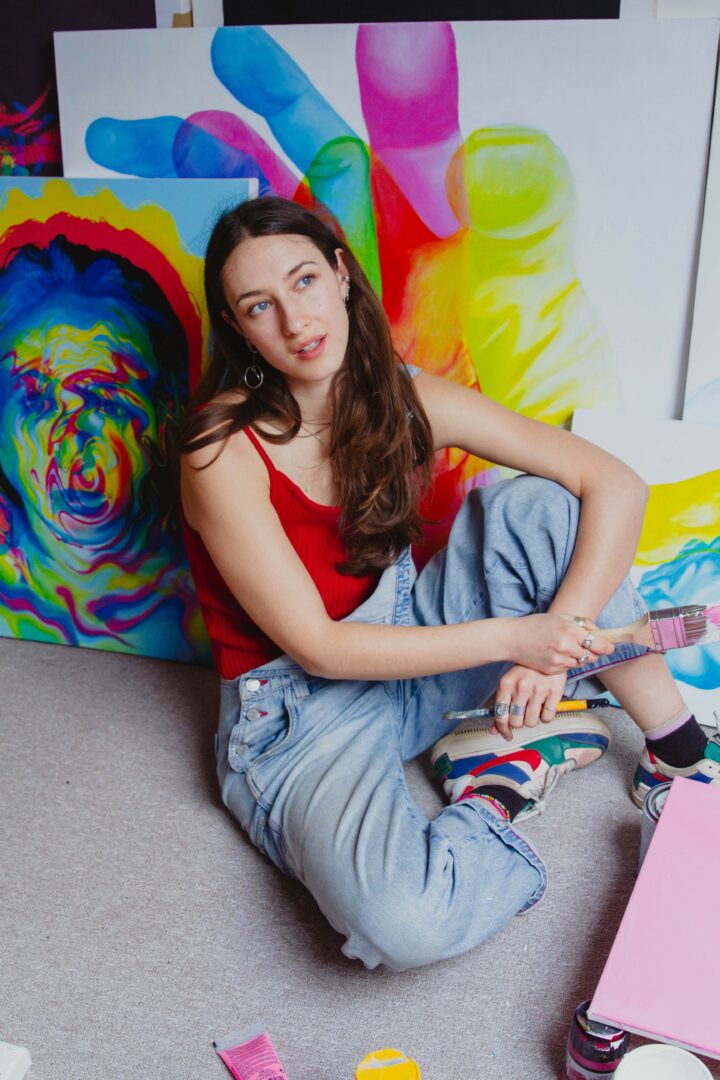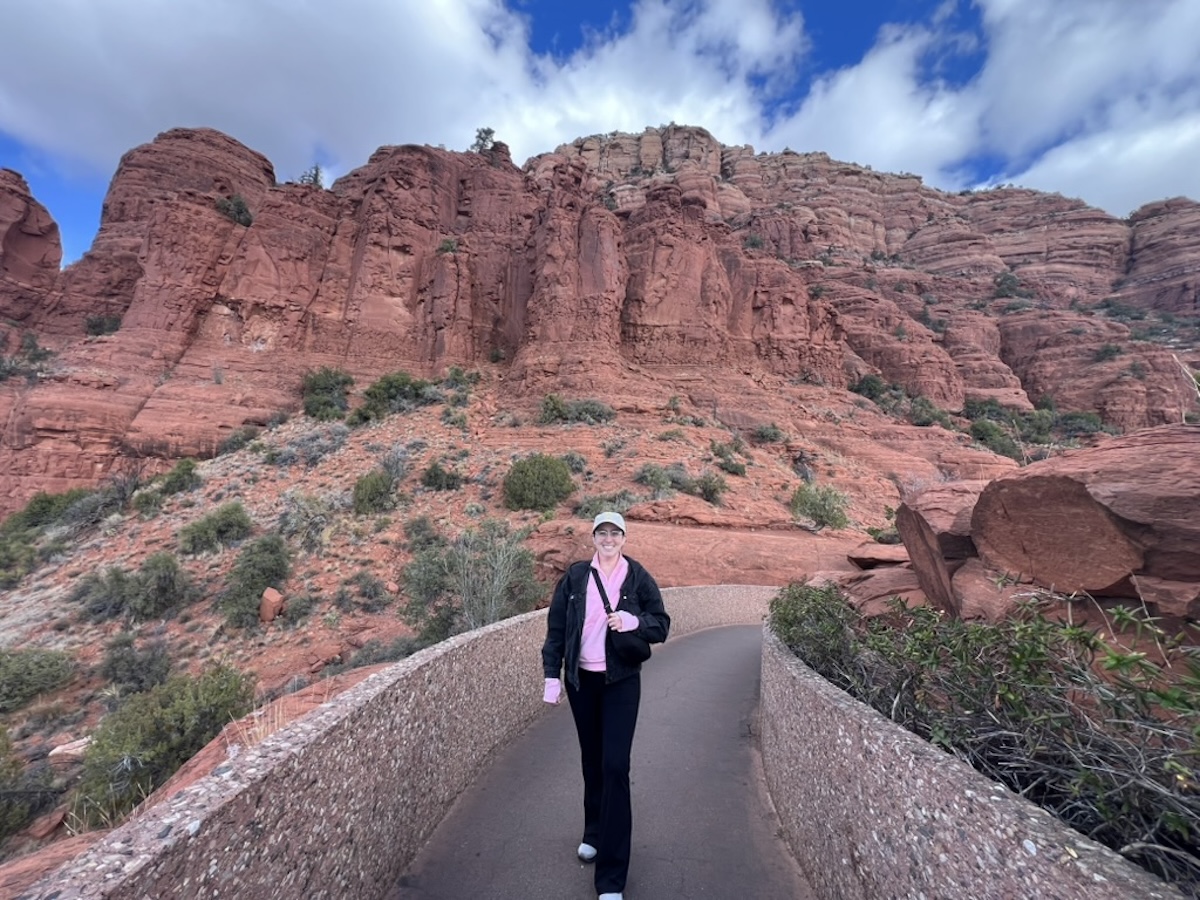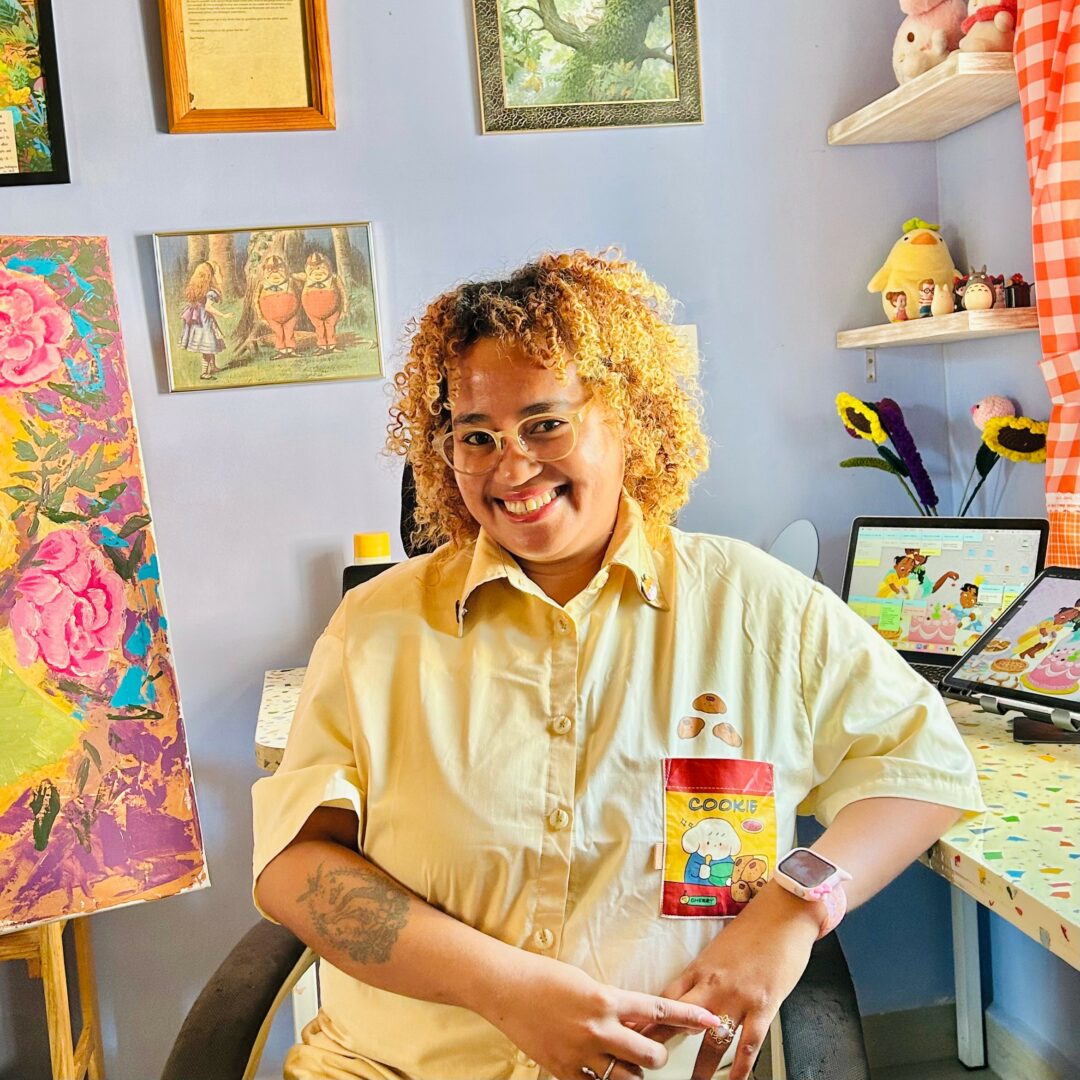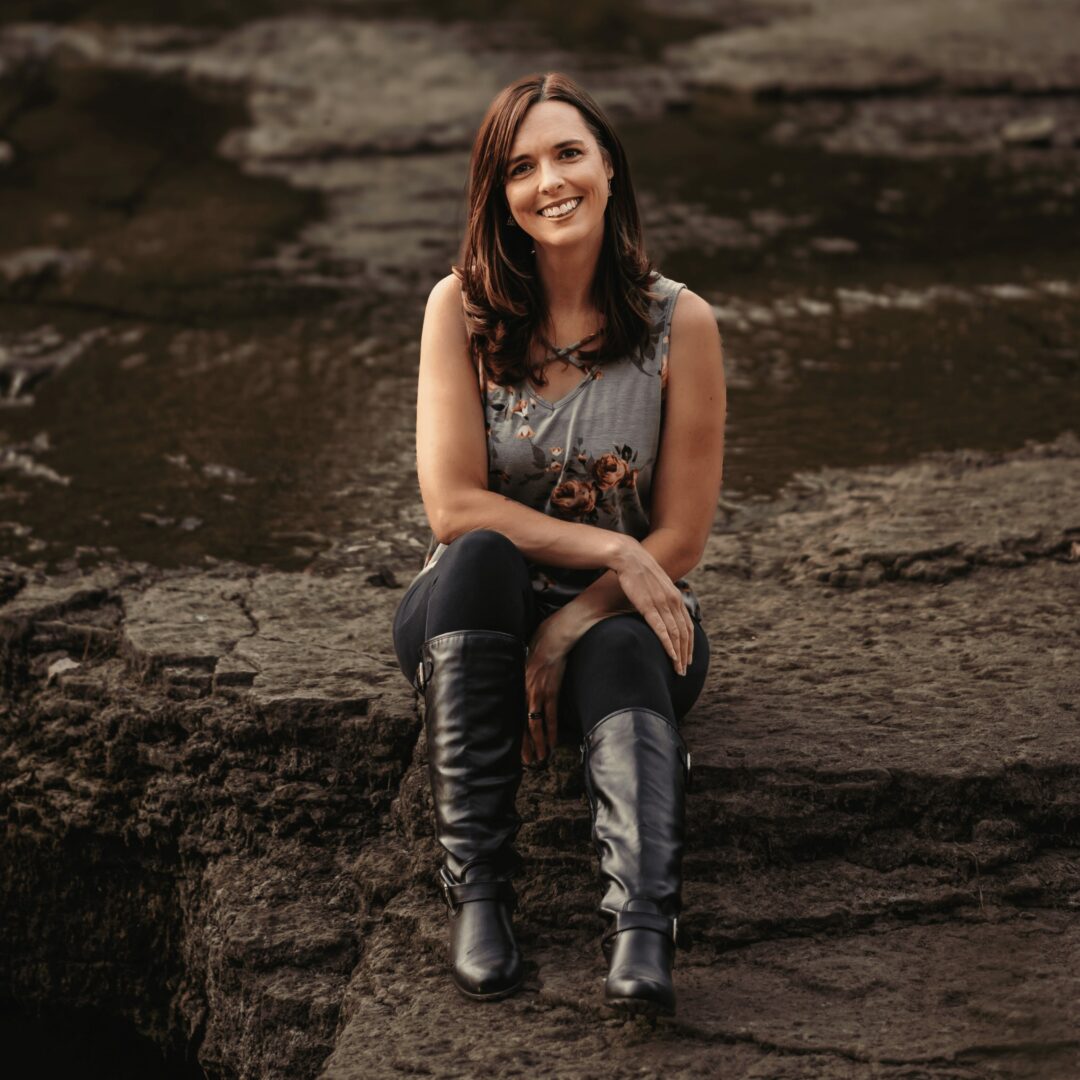We were lucky to catch up with Helenya Apostolou recently and have shared our conversation below.
Helenya, first a big thank you for taking the time to share your thoughts and insights with us today. I’m sure many of our readers will benefit from your wisdom, and one of the areas where we think your insight might be most helpful is related to imposter syndrome. Imposter syndrome is holding so many people back from reaching their true and highest potential and so we’d love to hear about your journey and how you overcame imposter syndrome.
Imposter Syndrome is the most bizarre feeling.
I hear so much about it and understand what it is – but that is very different to experiencing it.
The worst instance of imposter syndrome that I have endured was 3 days before my solo exhibition, ‘Triple Vision’.
As the opening date approached I became certain that my weeks, months and years of hard-work meant nothing, and I had no reason to be sharing it with the world. I was completely convinced that my friends and family had been lying to me throughout my early career, and that in reality, my work was embarrassingly childish and downright terrible.
The conviction with which these thoughts spiralled through my head was terrifying, and though I had experienced minor episodes of imposter syndrome previously, this time nothing anybody said or did made me feel better.
The realities of these strange and negative head-spaces is that, sometimes we don’t necessarily ‘overcome’ them, so much as ‘move through’ them. For me, all that could help was the passage of time and the knowledge that no matter what, the show was happening and that I had tried my best.
Of course, deep breaths and a wonderfully supportive partner massively helped, but that feeling didn’t fully disappear until after the show, when I had proof that people were smiling and enjoying my work rather than wincing and wrinkling their noses in distaste.
Making art can be so tricky because as much as I’d like to say that ‘other people’s opinions mean nothing to me’, and that ‘I am happy in my own work and process’, that would be a lie.
Of course I adore making my work for me, and the process of creating is very important in any practice, but so is sharing. I believe that artists make art to communicate in ways we don’t otherwise have words for; how can we converse with an empty room?
So much of my practice is spent in isolation that sharing work with an audience is bound to feel scary, but it is a vital part of being an artist. Human beings are inherently social and require community. No matter how independent or confident, reassurance from other people never goes amiss.
This is perhaps why, my immersive exhibition ‘Triple Vision’ was so focused on the experiential aspect of art. My work is highly focused on interaction and therefore, it felt like it was at the mercy of it’s audience, possibly furthering my fear of their reactions.
In this instance, I think it is important to assume that most people are lovely and genuinely want the best for you. I find that remembering this can provide the morsel of encouragement you need to push through self-doubt and make it to the other-side of whatever is causing these feelings!
Despite sounding trite, it genuinely is a case of one foot in front of the other, task by task until enough time has passed that you have a bank of evidence to disprove any critical internal voices in the future – at least, I hope so!
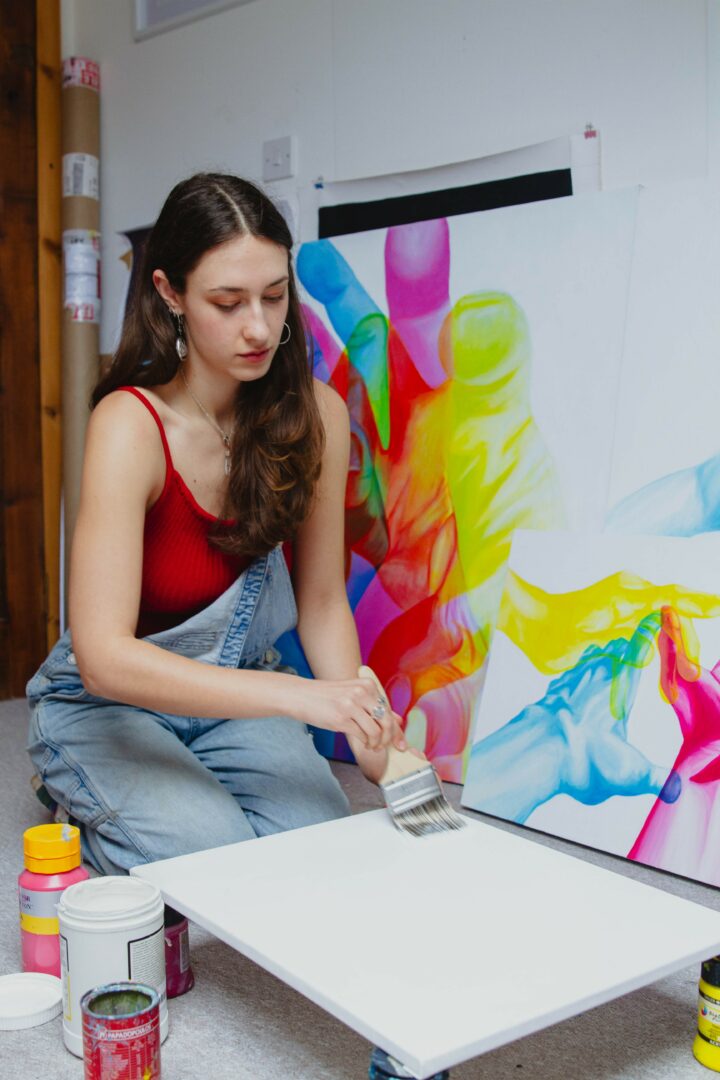
Thanks, so before we move on maybe you can share a bit more about yourself?
I use colour theory to create optical illusions and make immersive artworks that react with coloured lighting.
My work primarily focuses on bridging the gap between movement and stillness by creating light reactive paintings and drawings which move and change under RGB LED lights.
I use colour theory and the subtractive primary colours to layer images at different stages of movement. This creates short, repetitive, stop-motion animations when displayed under colour-changing lights, providing an immersive viewing experience.
This is a technique I have been developing through different processes like screen-printing, drawing and painting and I have honed through 5 years of trial and error. It is known as the Samoiloff effect, coined by Adrian Samoiloff in the 1920’s for use in theatre set design; However, I arrived at this effect organically through my studies of colour theory and light, and only learnt about Samoiloff retrospectively.
I use this effect to tell stories, conveying difficult emotions or ideas, and to depict progressions or cycles. Different images and meanings fade in and out of clarity on a slower lighting sequence, so that layers can be observed individually while three different time-frames continue to coexist on the canvas or page.
Under RGB lighting, my work comes to life, imitating natural phenomena like rippling water and blooming flowers.
Watching nature bloom and unfurl all around me captures my imagination every spring, and this year I dedicated an entire series of original paintings to nature’s impressive creations. The seasonal blooming of flowers and foliage represents the change that is constantly happening around us, and is a reminder to me that nature unfolds in its own time, perfectly.
Without the use of speciality lighting, my pieces remain bold, colourful and eye-catching in natural light. The vibrant colour-palette integral to this technique juxtaposes the more sensitive and heartfelt notions my paintings explore; such as anxiety, frustration and longing. The overlapping colours and designs in my work provoke visual overwhelm, identifying with the hard-to-depict subject matter and emotional saturation of some pieces.
Recently, I have been experimenting with the arrangement of the cyan, magenta and yellow layers which make up my pieces, spreading them further apart so they can be viewed all at once (See ‘Intangible Touch’). I am interested in using these colours to represent various planes of existence, coinciding on one canvas.
Each image holds its own story, unaware of the role it plays as part of a bigger picture. I intend to develop this idea further as my practice progresses.
Since 2022, I have been sharing my work online as short videos, to give people a sense of what I do. I have also had exhibitions showcasing my work in person, filled with colour, lights and illusion.
I love it when people are able to experience and connect with my work in real life. My art is all about exploring the limitations of human senses and providing an escape into illusory worlds with psychedelic encounters.
Most recently, I have been playing with spectatorship in my work by making my art obvious. I put my designs on T-shirts, stickers and even billboards, to challenge the idea of art being inaccessible and separate from everyday life. I strongly believe in the importance of colour and beauty enhancing and enriching our brief experiences of this world, so I love the idea of adding to this with my work!
I have an online shop, where my art is currently accessible in the form of open edition prints, along with the aforementioned light-reactive T-shirts and stickers. I also have regular drops of limited edition giclee prints (specifically of my paintings) and the next one is in March 2025.
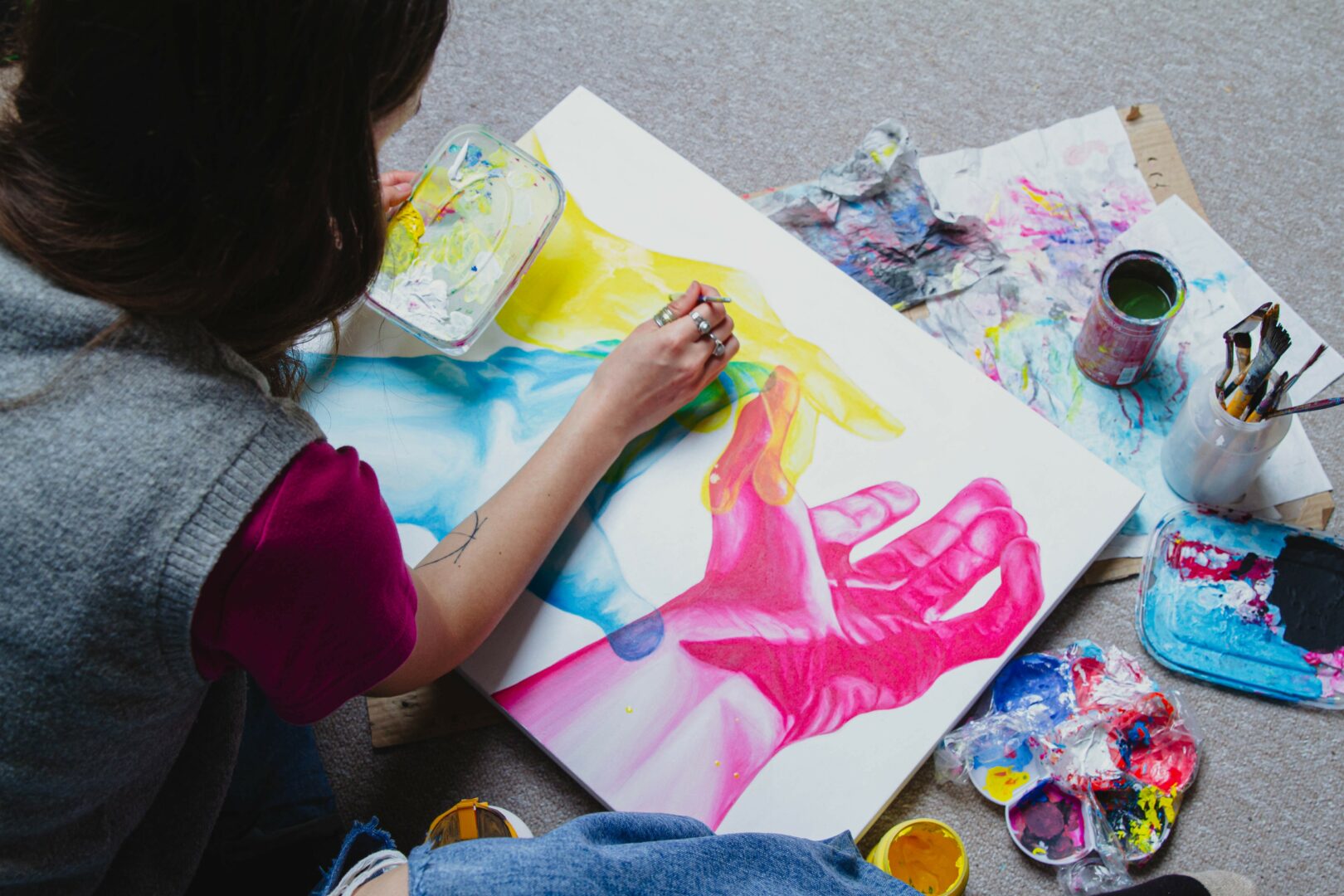
There is so much advice out there about all the different skills and qualities folks need to develop in order to succeed in today’s highly competitive environment and often it can feel overwhelming. So, if we had to break it down to just the three that matter most, which three skills or qualities would you focus on?
I would say that the absolute most important qualities to develop are commitment and dedication.
Creatives are not simply born with technical ability and knowhow – you need to practice, and work consistently to get anywhere. I find it so frustrating when people comment on ‘talent’, as though people are blessed with natural skills bestowed on them from the heavens above.
No – everybody who is good at something, got there through determination and practice.
Of course, it massively helps if you have a penchant for a certain activity, because when it is enjoyable then practicing comes easily. For me, using my hands to create has always felt great, so therefore I have spent a lot of time drawing, painting, crafting. Over time, I have improved and been able to make this my career!
I also think this level of determination is necessary for getting yourt work out in the world.
In the creative industries, rejection is so common, and can be really painful. However, if you have the willpower to commit to you dreams and keep going, things will always work out. I spent a year working in hospitality and another 2 years working in education before I was able to make a living from my creative practice alone. I believe this is relatively quick too – many artists and creatives spend years working two jobs to make ends meet. So, as cliche as it sounds, don’t give up!
This leads into my third bit of advice which is to learn to work with what you have. There are always opportunities available, it just takes a bit of confidence to go for them. If you can learn to push yourself out of your comfort zone and go for what you want, things start to come together. Often, big opportunities will seem scary at first but if you can keep an open mind and stay adaptable then you will learn so much more by DOING than THINKING.
I find it so helpful to remind myself that nobody really knows what they are doing, but if it feels good then why not keep trying.

What is the number one obstacle or challenge you are currently facing and what are you doing to try to resolve or overcome this challenge?
The number one obstacle I am currently facing is seeing the value in myself.
I think this goes hand in hand with Imposter Syndrome, as previously mentioned, but at the current time it feels exaggerated.
I think there is so much happening in the world right now, politically, environmentally and socially speaking, that making colourful animated artwork seems futile.
I have spoken to other artists and creatives who feel similarly; Musicians who don’t feel like their sounds or words can even begin to convey the tragedies we are currently facing; Actors who feel guilty for playing out dramas that are painfully real in other parts of the world; Artists who feel like their paintings will never capture the emotional turmoil endured by so many.
However, I am trying to remember that art, connection and expression are the remedies for all of these. That coming together to CREATE our future is very powerful. I am still practicing regularly, and slowly starting to share my work more again in the hope that my light (quite literally in this instance) will spread a positive message.
My work is not directly political, but I am reminding myself that sometimes providing a colourful escape can be enough to encourage hope and make a change.
Contact Info:
- Website: https://helenyaapostolou.com/
- Instagram: https://www.instagram.com/helenya_art/
- Facebook: https://www.facebook.com/p/Helenya-Apostolou-100071127998286/
- Linkedin: https://uk.linkedin.com/in/helenya-apostolou-b20156202
- Youtube: https://www.youtube.com/channel/UChRGP2FnUxrG3kY7UJPIOkw
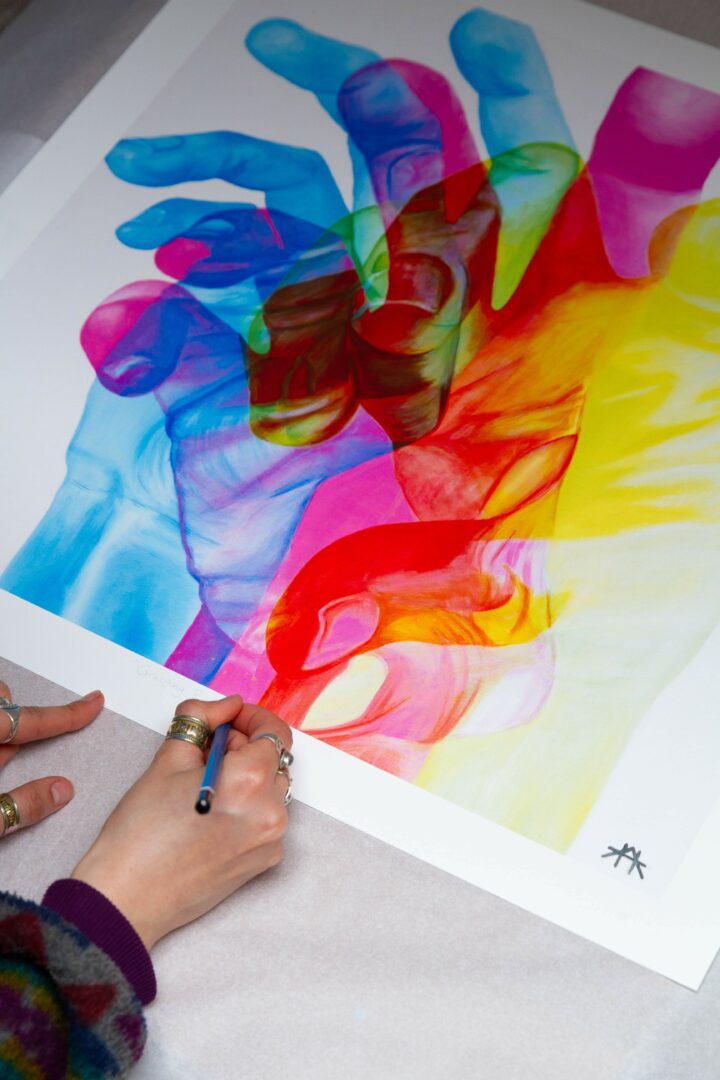
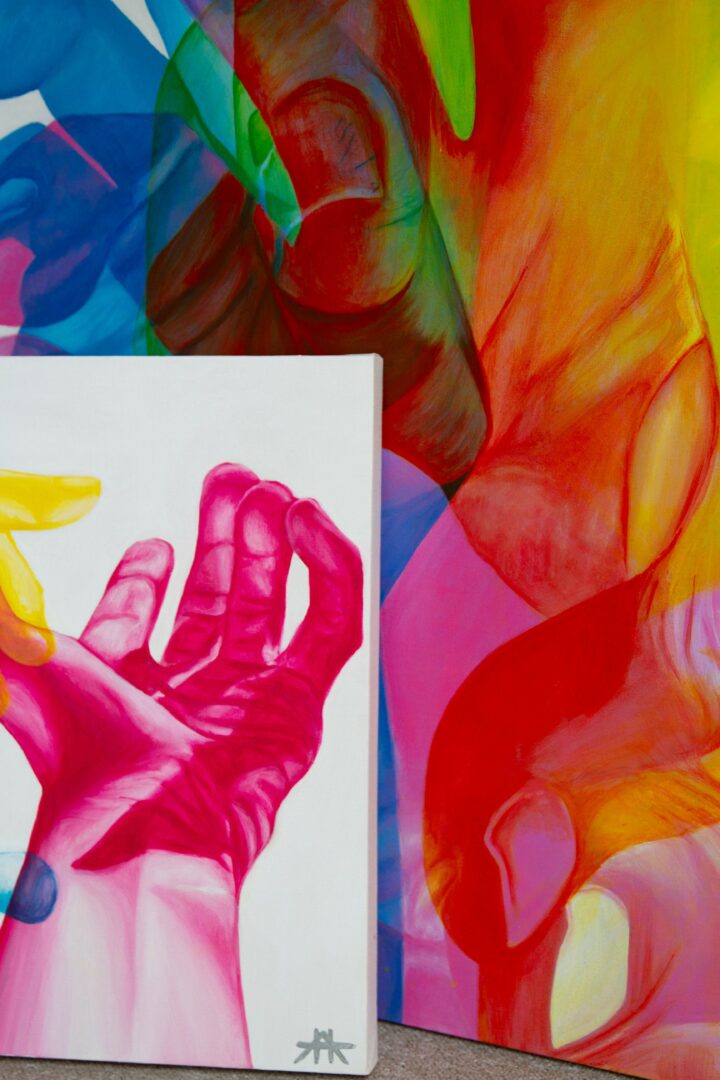
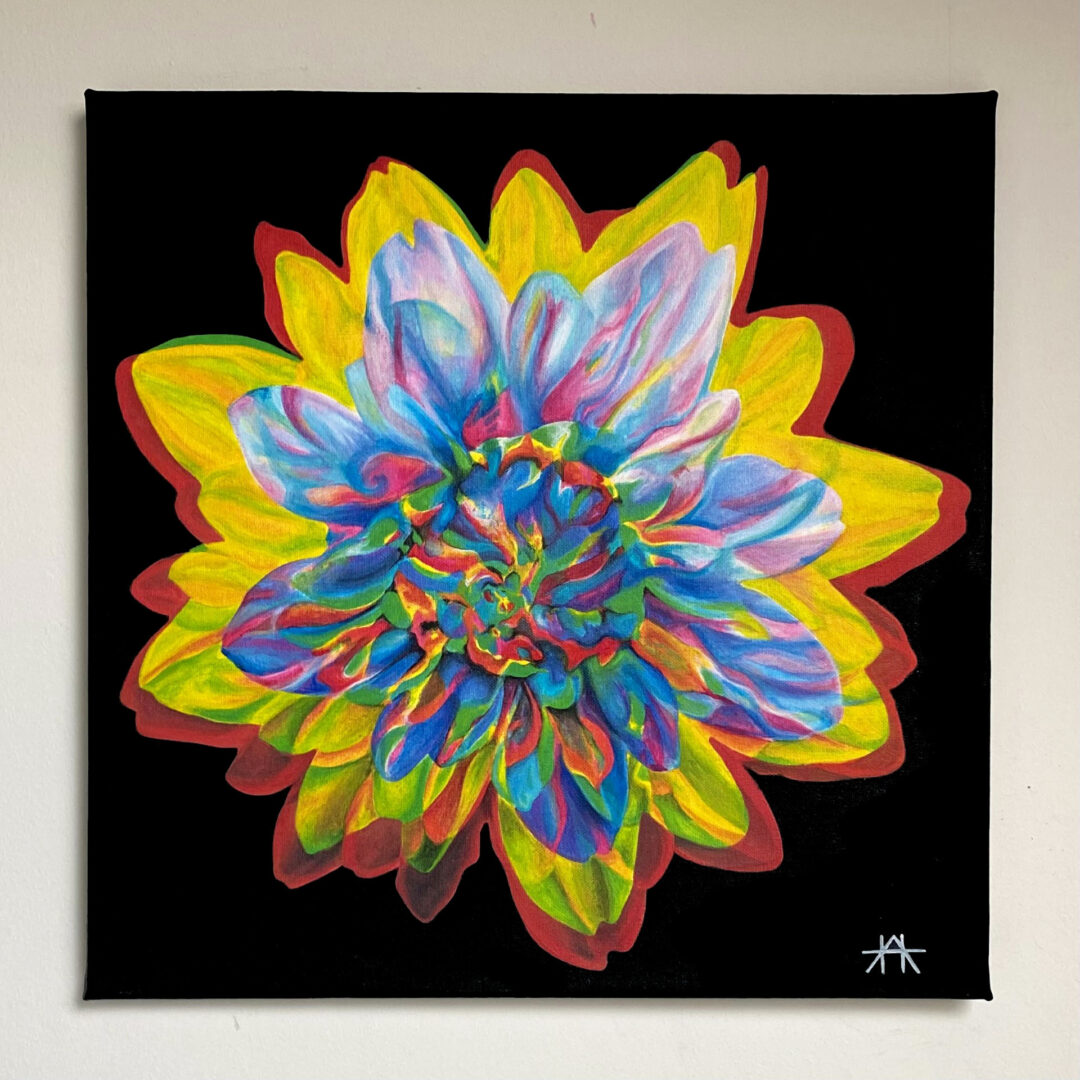
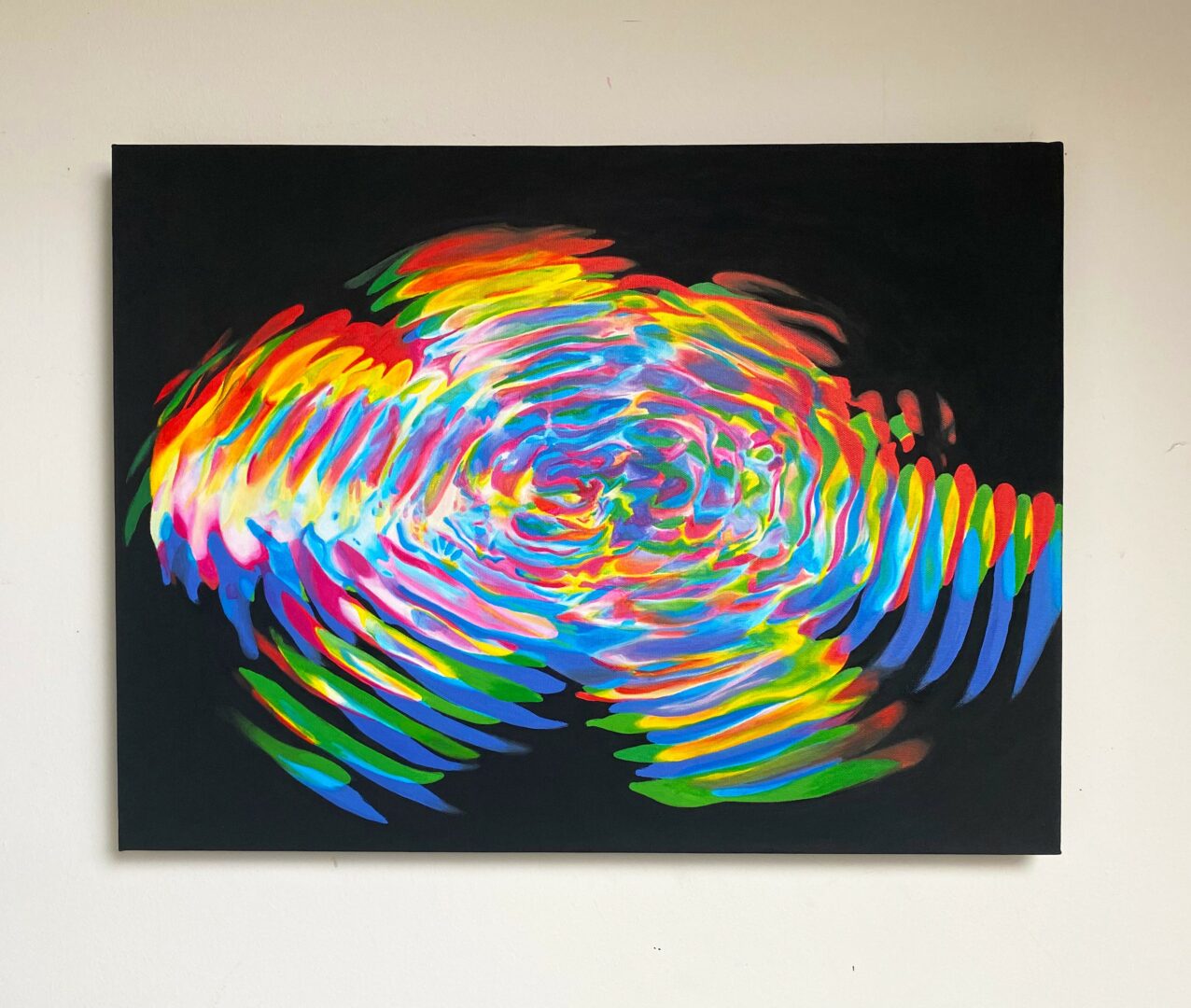
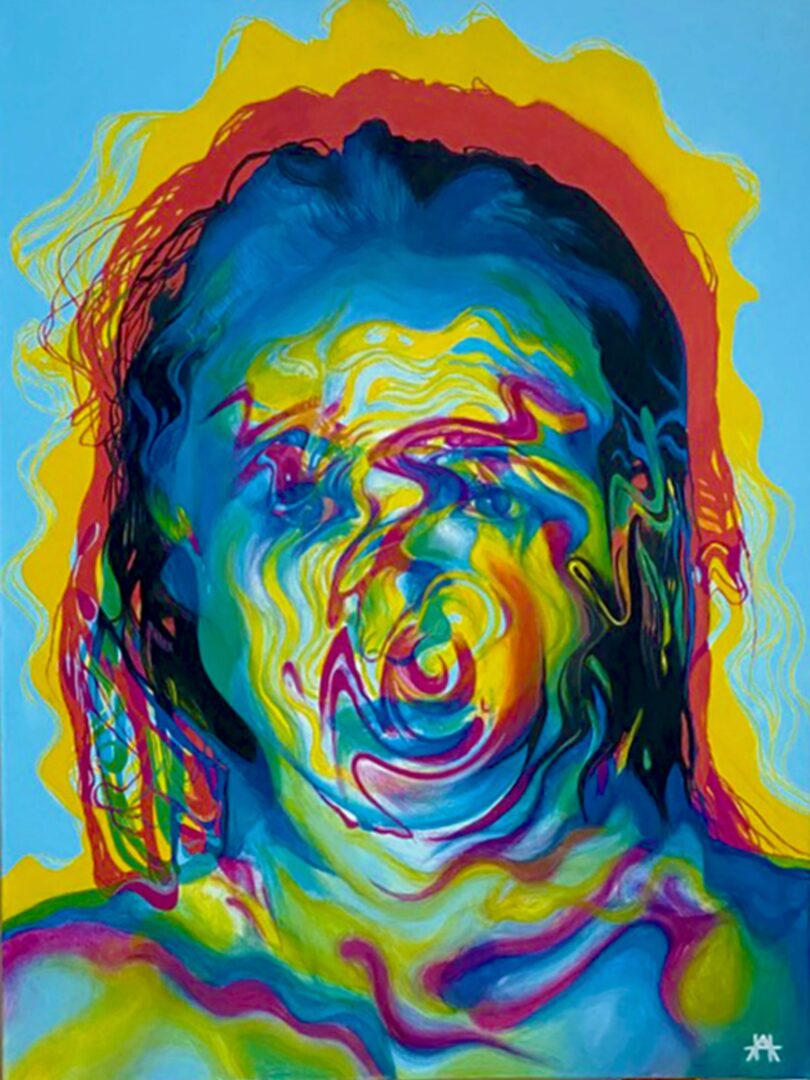
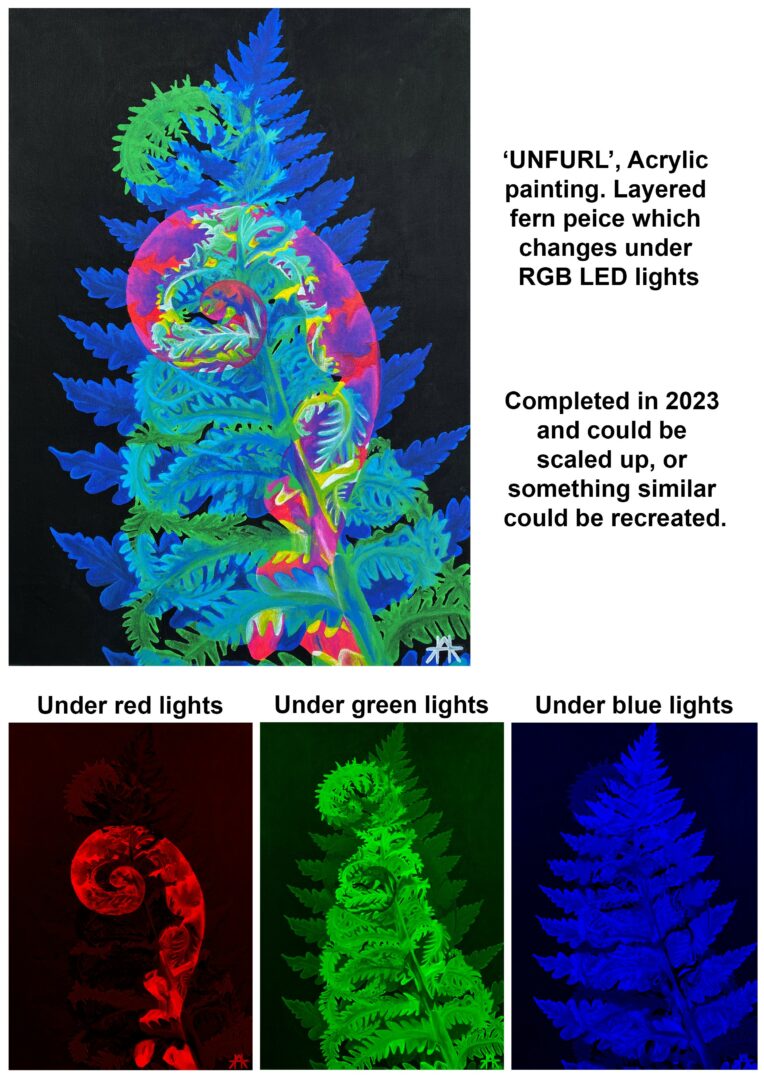
Image Credits
Zoe Victoire Moungabio (photographer & stylist)
so if you or someone you know deserves recognition please let us know here.

